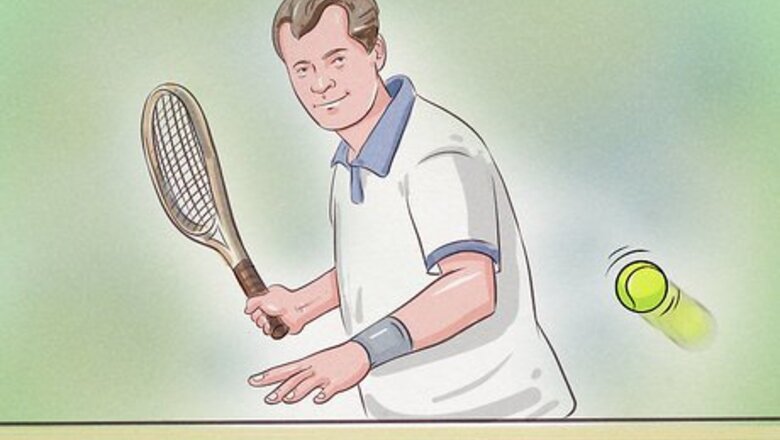
views
- Focus on accuracy rather than speed, and put your weight on your back leg; keep your eyes on the ball, move slow, and hold the racket gently.
- Practice regularly with people more skilled than you, record yourself playing, and ask for constructive criticism; enter tournaments as well.
- Drink plenty of water and eat a nutritional bar during changeovers; stretch before each match, exercise each week, and do strength training.
Identifying and Correcting Specific Weaknesses
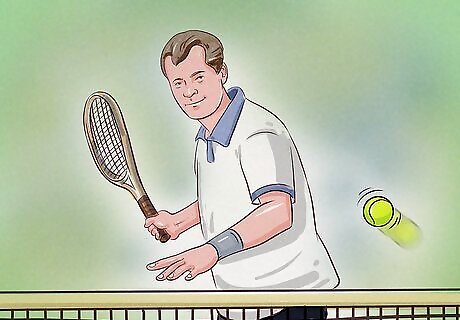
Focus on accuracy, not speed, when serving the ball. Beginner tennis players often serve the ball using all of their speed and strength. You don't need to hit the ball with all your might, though! Don’t put 100% of your energy into a serve. Professional players tend to give about 80% energy. When you serve, focus more on accuracy than power. Practice hitting the ball exactly where you want it to go rather than just hitting is as hard as you can. Concentrate on your aim. Carve out time in your tennis routine to work on practice serves.
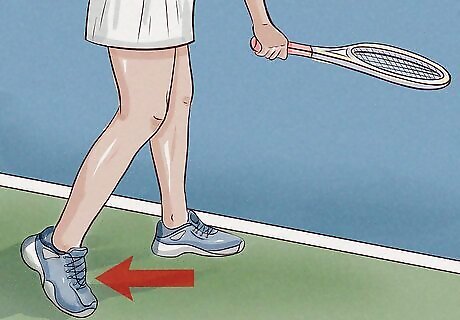
Put all your weight on your back leg before you take a shot. By putting your weight on your back leg, you’ll set yourself up to create momentum going forward. This will make it so your body moves in a much more fluid and natural way when you take your shot.

Keep your eyes on the ball at all times. Even though this sounds easy, every tennis player must master this skill. Train your eyes on the ball when your opponent serves it to you. Make it the focus of your entire vision. Follow it as it comes to you. Watch as you hit it with your racket. Then, continue to follow the ball as it moves across the court. Keep your head still and your eyes on the ball even when it makes contact with your racquet. It's natural to want to look ahead at your target, but you have to break this habit. Remind yourself during every practice to do this and it will eventually become second nature.
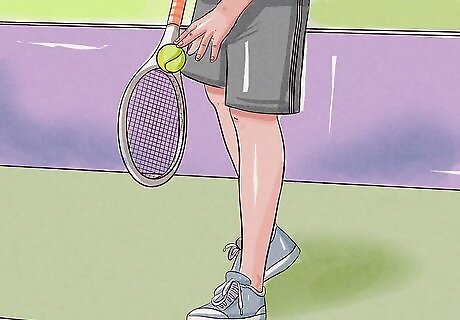
Move slowly and deliberately on the court. Don’t rush your shots. Use as much time as you can to serve, position yourself, and to gather your thoughts between points. If you rush yourself unnecessarily, you’ll break your focus and take shots that are inaccurate.
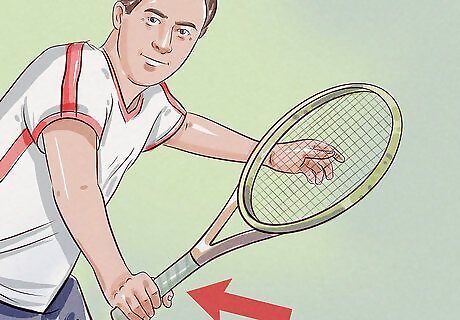
Hold your racket gently, if your swing is rigid or slow. Avoid putting a death grip on your racket. This will not only tire your hand out quickly, but it’ll probably take you longer to respond to your opponent’s shot. Instead, hold the racket loosely and gently. While this may take some getting used to, you’ll be able to improve your power and accuracy.

Restring your racquet if your swing becomes weak or inaccurate. Some people restring their racquets themselves, but unless you have a tennis stringing machine and a few special tools, it's better to hire a professional to do it. Once you do, you’ll likely see some improvements in your hits. This is especially true if you feel as if you don’t have a hard enough serve. Look up tennis shops or sporting goods stores in your area, and call to find out if they do restringing. Many of them do.
Taking Your Game to the Next Level

Practice regularly. With the right feedback, a lot of practice will enable you to address and fix the many of the weaknesses in your game. As a result, you should establish a regular tennis schedule so you are always improving. If possible, practice 4 or 5 times a week for about 2 hours. Any amount of feedback you get while practicing will help you improve your game. Serena Williams Serena Williams, Professional Tennis Player Success comes after the hard work. "Luck has nothing to do with it, because I have spent many, many hours, countless hours, on the court working for my one moment in time, not knowing when it would come."
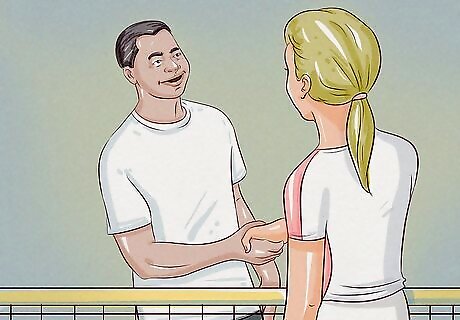
Play with people who are better than you. You won’t improve your game if you play with people who aren’t as good as you. Instead, challenge yourself by playing with people who have more skill and experience than yourself. This way, you’ll not only be able to watch them, but you can gain their feedback about what you can do to improve your game. Find a new practice partner if you think you've outgrown your old one. You can look for new partners at your tennis club or put the word out that you're looking for one. If you aren't part of a tennis club, look into joining one!

Enter tournaments and play with different people. Look for tournaments in your region. Depending on where you live, there may be several or even a dozen or more tennis tournaments every year. Many of these tournaments will include people of all skill levels. You may be able to enter a tournament through your local tennis club. If you’re a high school or college student, you can try to join your school’s team. EXPERT TIP Peter Fryer Peter Fryer Tennis Instructor Peter Fryer is a tennis writer and coach based in Derry Northern Ireland. He completed his professional teaching tennis qualification shortly after finishing university and has been teaching tennis for over 13 years. Peter began Love Tennis Blog in 2010 and contributes to the BBC and national media outlets. Peter Fryer Peter Fryer Tennis Instructor Keep pushing yourself to take on harder challenges. Tennis coach Peter Fryer says: "I always give my students a target to work toward. Then, when they hit that target, we re-evaluate and go again. That might be matches, league competitions, USTA leagues, or state championships."

Ask your match partners for constructive criticism. Have an informal discussion with your match opponents about your game. Ask them about your performance. Find out what they think you can do to improve your game. In addition, ask them what your strengths are. Only offer your opponent constructive criticism if they ask for it. Regardless of your partner’s response, you should respond politely and express your gratitude for their feedback.
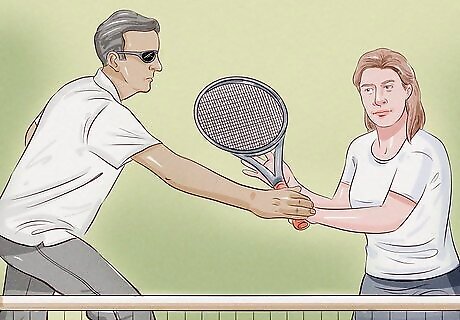
Find a coach or professional to provide you with feedback. Hire a coach or a professional player to observe you play. The more matches they observe, the better. This way, they’ll be able to study your game and give you feedback about ways you can improve your playing. To find a coach or professional: Contact a local tennis club near you. Look online to see if there are professionals or coaches in your area who will meet with you.Continue practicing independently, even if you have a coach. Tennis writer and coach Peter Fryer says: "If you want to improve in tennis, you have to play as much as you can. Even if you're taking weekly lessons, it's still important to go to the courts a couple of times during the week to practice what your coach is teaching you."
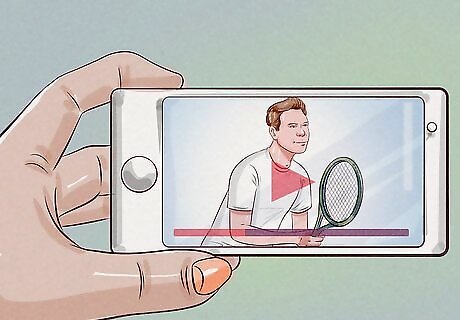
Video yourself playing. Set up a camera or have a friend record you while you play. Then, watch the video and note aspects of your game that could be improved. You’ll likely discover issues with your serve, stance, and posture that you didn’t know about. Watch to see if your shots are too short or too deep. Note whether you’re standing in the wrong place for a serve or when defending. Look to see if there are types of shots that you have a hard time with. For example, if you have problems hitting high bouncing balls with your backhand.
Focusing on Your Fitness
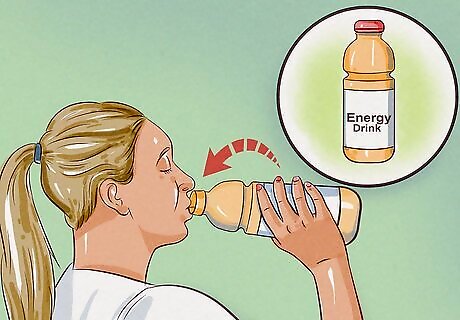
Drink water or a sports drink during changeovers. Keep yourself as hydrated as you can. Take advantage of sports drinks with vitamins and electrolytes to keep your energy up. This way, you’ll be able to perform as best as you can.
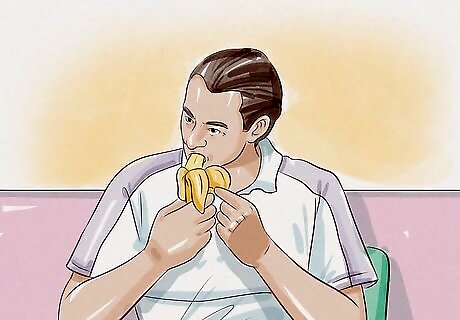
Eat a granola bar, energy bar, or nutritional bar every other changeover. You can also eat any other source of carbs. Also, consider a snack that has some protein. By eating carbs and protein, you’ll replenish some of the energy you’ve expended while playing. This will enable you to play longer and more effectively. Get a quick fix of protein by snacking on a handful of mixed nuts. Dried fruit or a banana will give you a quick dose of carbs during a changeover.
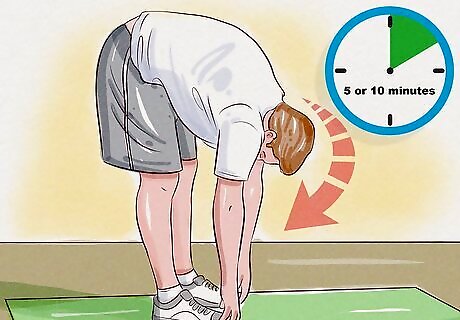
Stretch before your match. Set aside 5 or 10 minutes before your match to stretch. You can either do static stretching (stretching and holding your pose) or dynamic stretching (doing a variety of movements). If you already stretch, consider stretching a little more. Do a chest stretch by holding your arms out as far as you can. Stretch your core by bending slowly to one side and then the other. Stretch your legs by reaching for your toes.
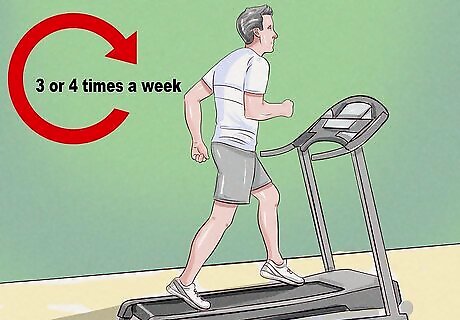
Commit yourself to a cardio regimen for an hour 3 or 4 times a week. The best exercises you can do are running or swimming. Cardio will help increase your endurance and make it so you can quickly move around the court.
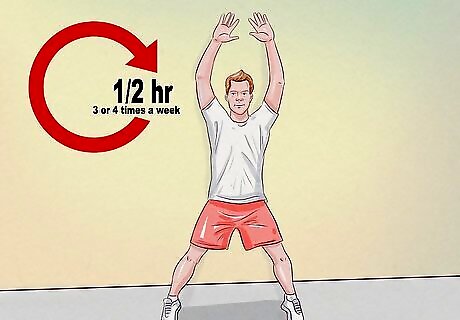
Practice aerobic exercises for half an hour 3 or 4 times a week. An aerobic workout will complement sustained cardio, increase your agility, and improve your reflexes. A good aerobic workout will include a variety of exercises. Ultimately, the more exercises and the more time you spend, the better. Practice pogo jumps to improve your springing ability and to strengthen your ankles. Do some lunges to improve your lower body endurance and strength. Try jumping jacks to improve your core and and agility.
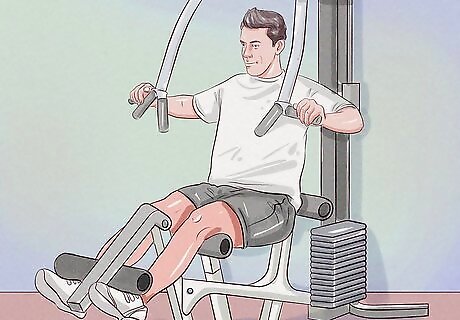
Do strength training a few times each week. Choose exercises that target your back, legs, core and shoulders. Lat pull downs, leg presses and resistance band moves are all excellent ways to focus on those areas. To work your arms, use weight machines with cables and pulleys that replicate arm movements in tennis.











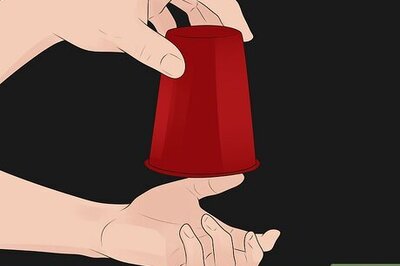
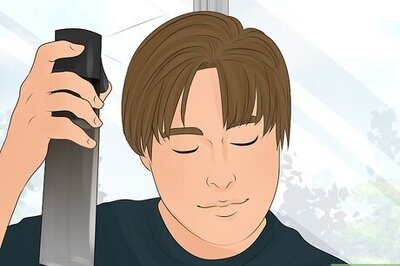


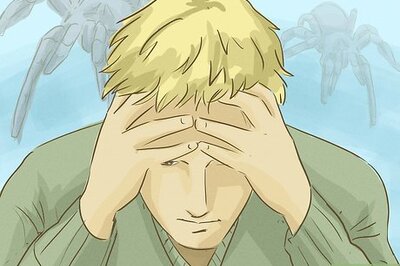
Comments
0 comment